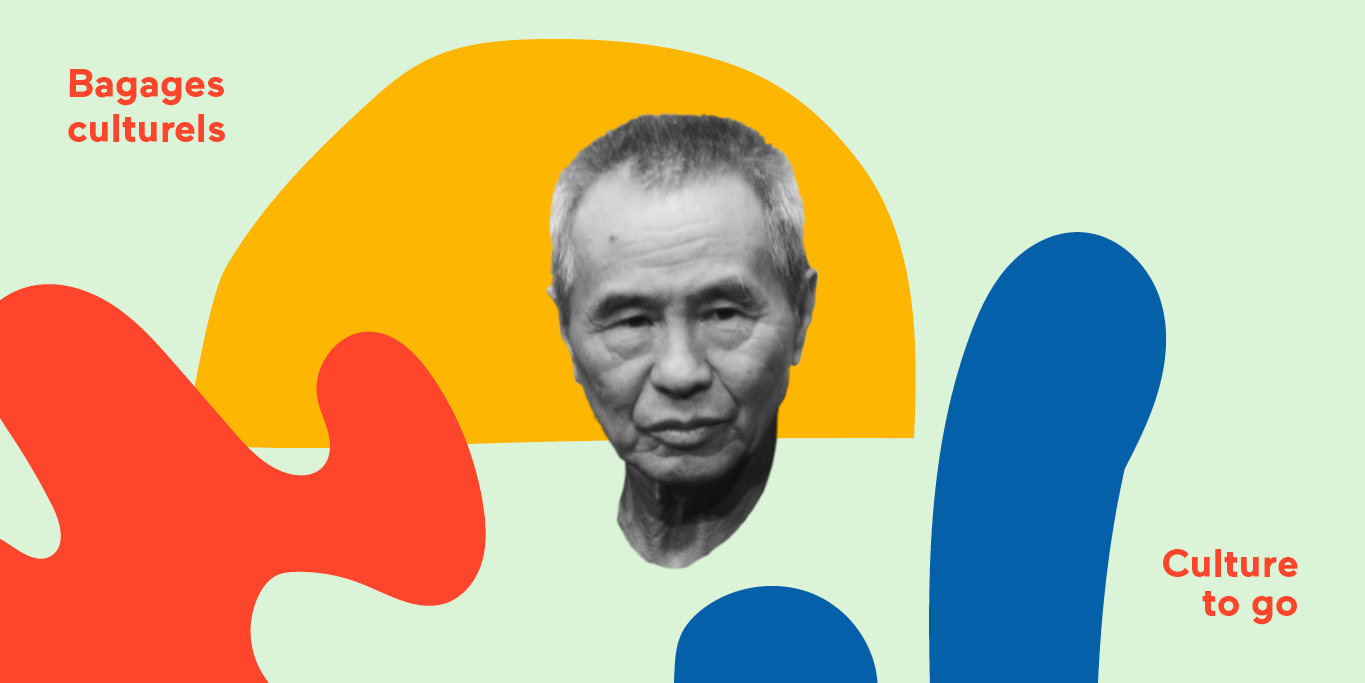During the summer of 2020, Érudit has concocted a major project to disseminate texts taken from Quebec cultural magazines, entitled “Culture to Go”. Carefully selected, these articles focus on the major themes and movements that have influenced the cultural landscapes of Canada and beyond. These articles, which have been presented via Érudit’s social networks and the Société de développement des périodiques culturels québécois (SODEP), are now collected here. Érudit distributes digital versions of current issues and archives of several cultural magazines. Tens of thousands of cultural articles are freely accessible on the Érudit platform.

SURREALISM – AN AUDACIOUS LITERARY AND ARTISTIC MOVEMENT
Inter
Casellas, Joan. “Dalí : artiste de l’action et performeur.” Inter, number 101, winter 2008–2009, p. 2–16
Perceived by some as an eccentric and by others as an artistic genius, Salvador Dalí has certainly been the talk of the town. Joan Casellas examines his contribution to the Surrealist movement, his artistic career in general and his achievements in performance art. This article from Inter magazine profiles an astonishing character.
Read on Érudit : https://id.erudit.org/iderudit/45485ac (in French)

QUÉBEC FRANÇAIS
Guéraud, Jean-François. “René Crevel (1900-1935) : le surréaliste oublié.” Québec français, number 121, spring 2001, p. 76–78.
Did you know surrealist René Crevel? Although rarely mentioned on the cultural scene, he is said to have been “the privileged witness of all the events that the movement experienced between 1922 and 1935”. As a writer, he bequeathed to the movement a significant body of literary work that is also “of the highest quality”. This article, written by Jean-François Guéraud in Québec français in 2001, reviews the life and work of this little-known Surrealist.
Read on Érudit : https://id.erudit.org/iderudit/55971ac (in French)

(RE)DISCOVERING LOCAL AND FOREIGN CINEMA
24 IMAGES
Grugeau, Gérard. “Le cinéma iranien : portraits de femmes.” 24 images, number 114, winter 2003, p. 63–64.
In this article from 24 images, Gérard Grugeau takes us on a journey into the world of Iranian cinema and its portraits of women. Based on the premise that “films are always a good indicator of the evolution of societies”, the author introduces directors such as Dariush Mehrjui, Rassul Sadr-Ameli and Mohsen Makhmalbaf, who tackle themes as vast as childhood, border refugees and the female condition. He describes what he sees as a “rich and varied culture, often still weakened by a pernicious moral order and arbitrary censorship”.
Read on Érudit : https://id.erudit.org/iderudit/24652ac (in French)

24 IMAGES
Neri, Corrado. “Le cinéma taiwanais : nouvelle vague ou chant du cygne ?” 24 images, number 155, december 2011, january 2012, p. 21–23.
How much do you know about Taiwanese cinema? In this article from 24 images, Corrado Neri introduces us to a little-known cinema in the throes of an unprecedented crisis. Indeed, after an “adventurous season”, the new wave of Taiwanese cinema (marked by “its formal boldness, its courageous analyses of the island’s society and history, its hermetic and aesthetically unholy productions”) is well and truly over, according to the author. By reviewing its latest commercial successes, not forgetting their themes and key figures, the author highlights the complex challenges now facing the genre.
Read on Érudit : https://id.erudit.org/iderudit/66686ac (in French)

SPIRALE
Desjardins, Denys. “La fiction documentaire ou l’art de résister.” Spirale, number 238, fall 2011, p. 56–58.
Discover (or rediscover) the importance of documentary cinema in Quebec’s cultural history in this article by filmmaker Denys Desjardins, published in Spirale magazine. The author provides a brief history of the genre in the Quebec context, as well as naming some of its key figures. The article also examines the uncertain future of the genre, which is said to have “lost its status as a work of art, becoming a commodity to be bought and sold by the minute (like archives) and disposed of at will”.
Read on Érudit : https://id.erudit.org/iderudit/65509ac (in French)

TICARTTOC
Dudemaine, André. “Peut-il y avoir un cinéma autochtone ?” TicArtToc, number 8, spring 2017, p. 40–43.
André Dudemaine examines this complex issue in an article for TicArtToc magazine. In it, the author discusses the various issues and challenges involved in viewing cinema from an Aboriginal perspective, particularly with regard to traditional beliefs and the cutting of scenes, as well as shedding light on the concept of “visual sovereignty”. He also notes the importance of deconstructing the mechanisms that perpetuate stereotypical images of aboriginal identity in the television industry.
Read on Érudit : https://id.erudit.org/iderudit/87018ac (in French)

JACK KEROUAC AND THE BEAT GENERATION
QUÉBEC FRANÇAIS
Marcoux, Jean-Philippe. “Jack Kerouac et l’Amérique.” Québec français, number 154, summer 2009, p. 82–85.
Jack Kerouac is known as the “wandering Franco-American” writer of the “Beat Generation”. Starting with his “Americanized French-Canadian patois”, this article, written by Jean-Philippe Marcoux and published in Québec français, looks at the elements that characterize his work, such as the quest for a “lost heritage”, spontaneous writing, the metaphor of the road and the influence of “bop” music. In an era marked by the rise of materialism and consumerism, Kerouac is interested in writing about his experience of a “marginalized America”, drawing on its values, landscapes, roads and contradictions.
Read on Érudit : https://id.erudit.org/iderudit/1822ac (in French)

QUÉBEC FRANÇAIS
Morency, Jean. “L’errance dans le roman québécois.” Québec français, number 97, spring 1995, p. 81–84.
In an article for Québec français magazine, Jean Morency discusses the theme of wandering in the Quebec novel, where the fascination with American space (which also characterizes the figure of the beatnik novelist) plays an important role. Drawing parallels with the writings of the “Beat Generation”, the author presents Quebec novels and explains how their characters “often find themselves disempowered by their relationship with American nature and space”.
Read on Érudit : https://id.erudit.org/iderudit/44320ac (in French)

A LOOK AT THE AUTOMATISTES
HISTOIRE QUÉBEC
Poulain, Martine. “L’art à l’époque de la « grande noirceur » : le Refus global.” Histoire Québec, volume 5, number 3, march 2000, p. 15–20.
The publication of Refus global took place during a pivotal period in Quebec’s history, marked both by the growing repression of the clergy and the emergence of major demands that shook up the art scene and society as a whole. This article, written by Martine Poulain, briefly summarizes the key events of this “great darkness”, helping us to better understand the historical context that saw the birth of the Automatistes and their famous manifesto. To be discovered in Histoire Québec.
Read on Érudit : https://id.erudit.org/iderudit/11421ac (in French)

ETC MEDIA
Fournel, Louise. “« Un tableau est un objet sans importance» (Paul-Émile Borduas).” ETC, number 44, december 1998, january–february 1999, p. 15–18.
The revolutionary aspect of the Refus global often tends to overshadow the artistic thinking behind the Automatistes’ art. This article by Louise Fournel, published in ETC Media, seeks to revive the image of Paul-Émile Borduas as “attentive to the subtle movements of human interiority”. With a brief overview of its foundations, the author reconstructs the framework of a movement that left its mark on the Quebec art scene.
Read on Érudit : https://id.erudit.org/iderudit/35437ac (in French)

LETTRES QUÉBÉCOISES
Bourassa, André-G. “Le Projet poétique de Claude Gauvreau.” Lettres québécoises, number 7, august–september 1977, p. 12–17.
Claude Gauvreau is considered the only poet to have belonged to the Automatist group. He is best known for writing “pure poetry”, i.e. “poetics whose rules and intentions are none other than those of having none. Gauvreau’s automatic writing, greatly influenced by André Breton’s work with the Surrealists, seeks above all to dissociate itself from the real, to let “the sur-real flow automatically”. In this article published in Lettres québécoises, André-G. Bourassa introduces us to the poetic project of this exceptional artist, offering some interesting avenues of analysis.
Read on Érudit : https://id.erudit.org/iderudit/40454ac (in French)

EXPO 67
HISTOIRE QUÉBEC
Pratt, Michel. “Expo 67 : ouverture et modernité.” Histoire Québec, volume 23, number 1, 2017, p. 28–30.
Were you fortunate enough to participate in Expo 67? The World’s Fair, held in 1967 on the theme of “Man and His World”, had many positive repercussions for the province of Quebec, helping to open it up to the rest of the world. In this article, Michel Pratt summarizes the organization of this large-scale event, including the creation of its logo, the origin of the famous passports, the orchestration of on-site transportation and even its program of shows. An article not to be missed in Histoire Québec.
Read on Érudit : https://id.erudit.org/iderudit/85556ac (in French)

LES CAHIERS DE LA SQRM
Boivin, Jean and Patrick Hébert. “Trois oeuvres musicales québécoises marquantes, diffusées quotidiennement sur le site de l’Exposition universelle de Montréal en 1967.” Les Cahiers de la Société québécoise de recherche en musique, volume 19, number 1-2, spring–fall 2018, p. 83–99.
Several works were broadcast daily in the pavilions of the World’s Fair held in Montreal in 1967. Among the most striking were (in this article by Jean Boivin and Patrick Hébert) Serge Garant’s music for the “Man and the Polar Regions” theme pavilion, Gilles Tremblay’s sound system for the Quebec pavilion and, uniquely, Otto Joachim’s work for the Canada pavilion. To find out more about the creation and impact of these three striking works, conceived for a very specific context and public space, read this article from the Cahiers de la Société québécoise de recherche en musique.
Read on Érudit : https://id.erudit.org/iderudit/1069878ar (in French)

CAP-AUX-DIAMANTS
Curien, Pauline. « Expo 67 : la découverte d’un Québec éblouissant. » Cap-aux-Diamants, numéro 89, printemps 2007, p. 25–28.
In this article from Cap-aux-Diamants, Pauline Curien recounts how Expo 67 enabled Quebecers to forge a new identity for themselves through “the magnificent image it projected back at them” and through a phenomenon she calls “symbolic appropriation”. In addition to describing the grandiose atmosphere on site, she offers a nuanced reflection on Quebec society’s relationship with the 1967 World’s Fair.
Read on Érudit : https://id.erudit.org/iderudit/6910ac (in French)

Graphic design: Daphnée BC